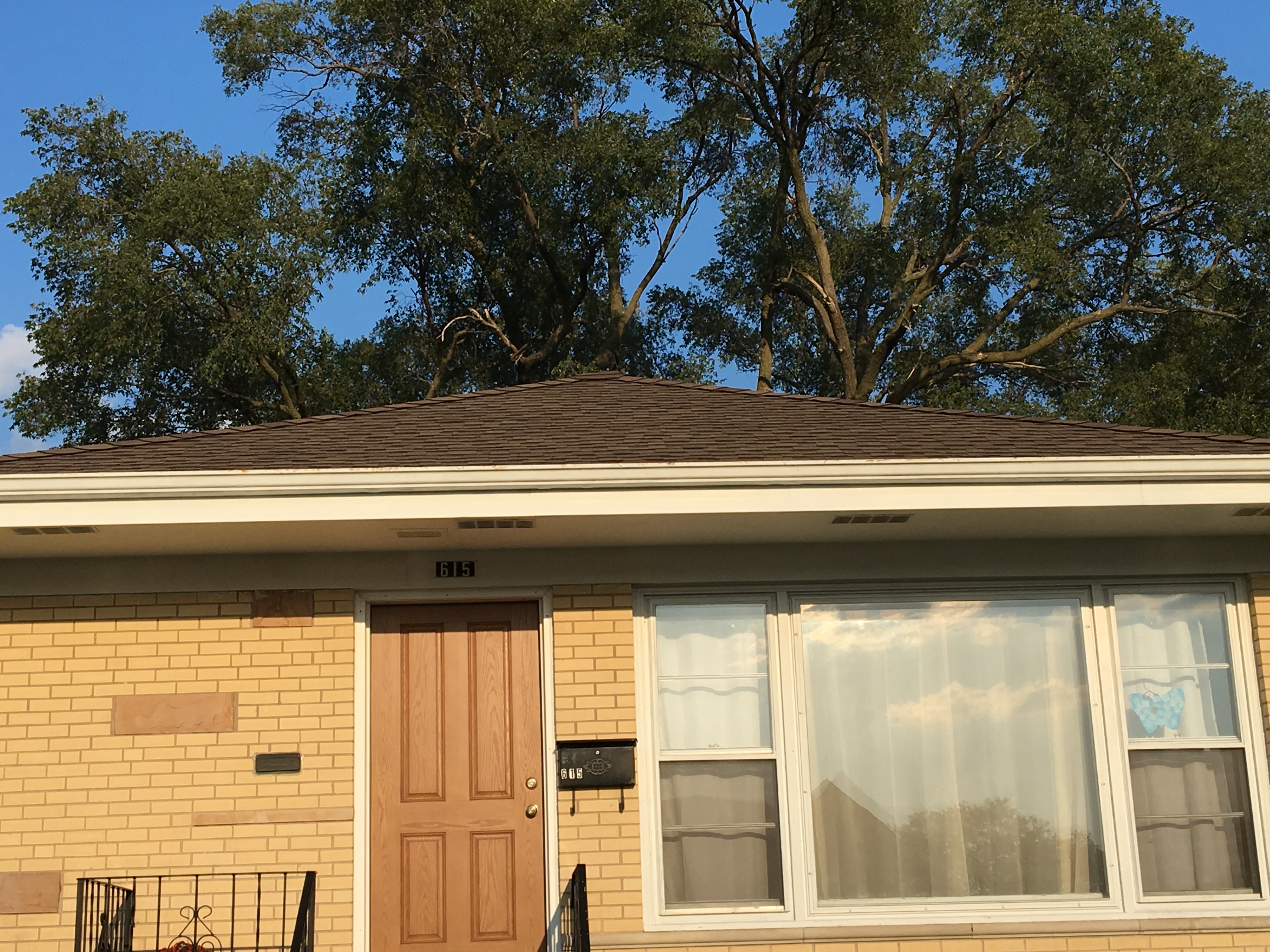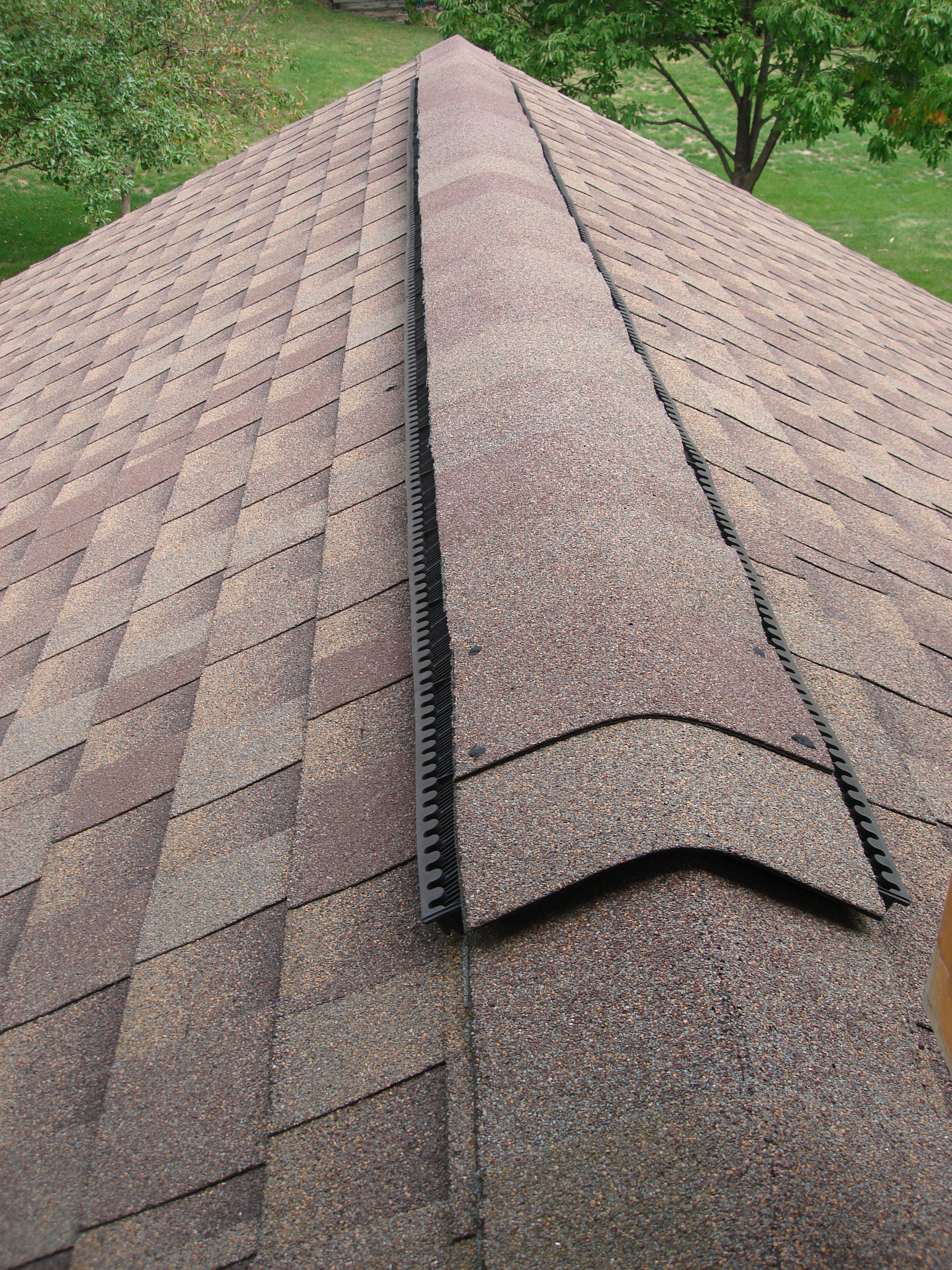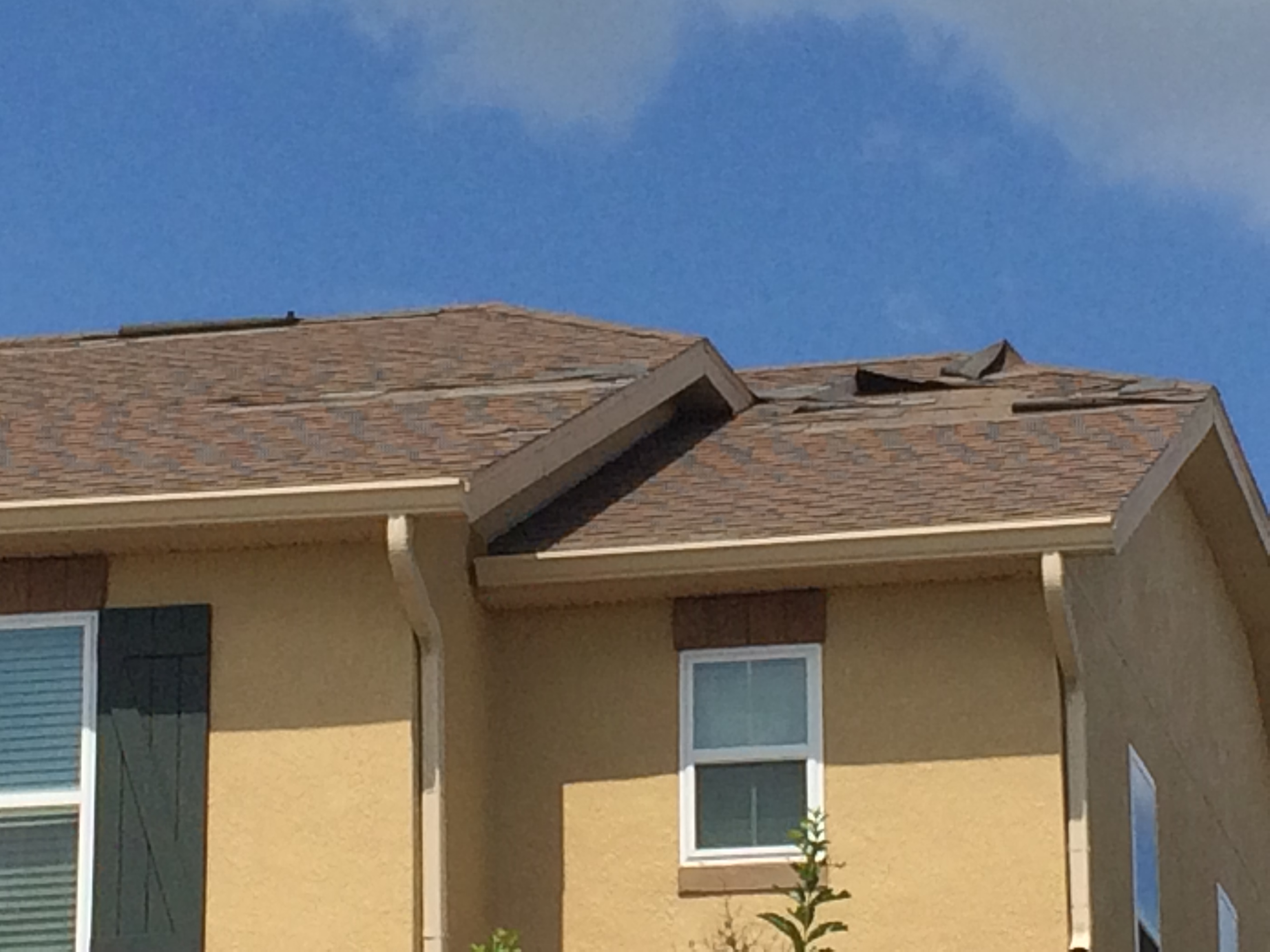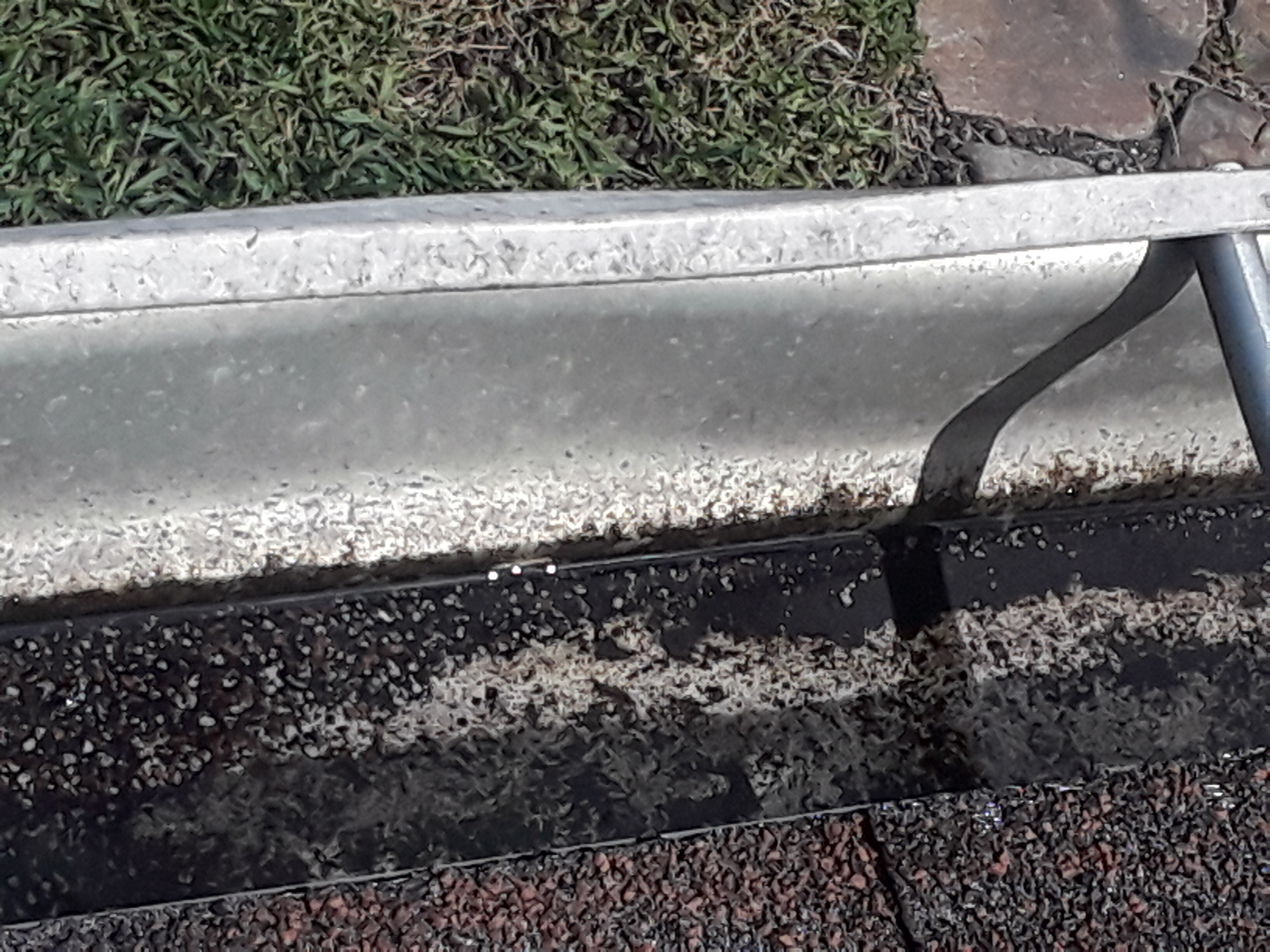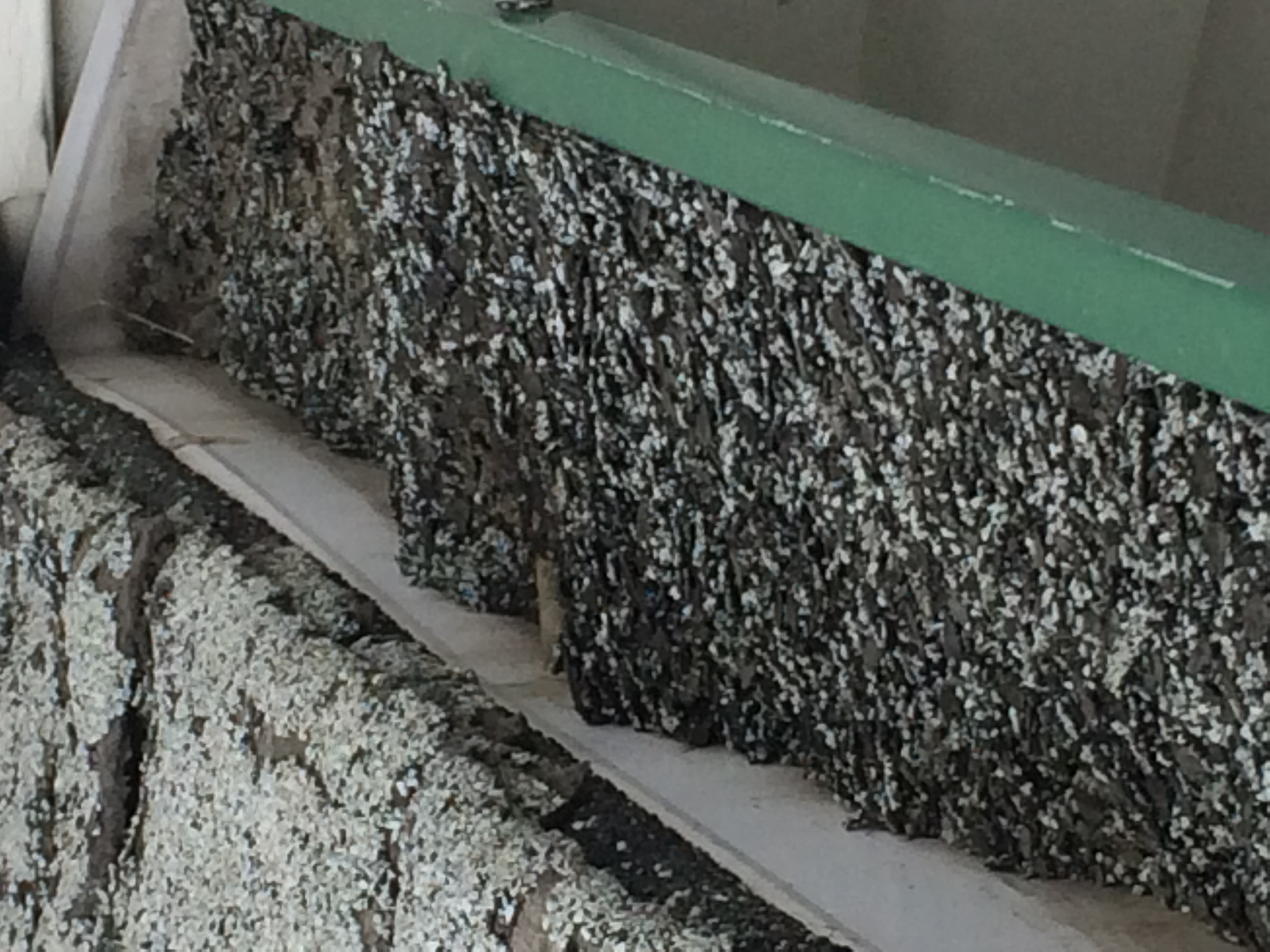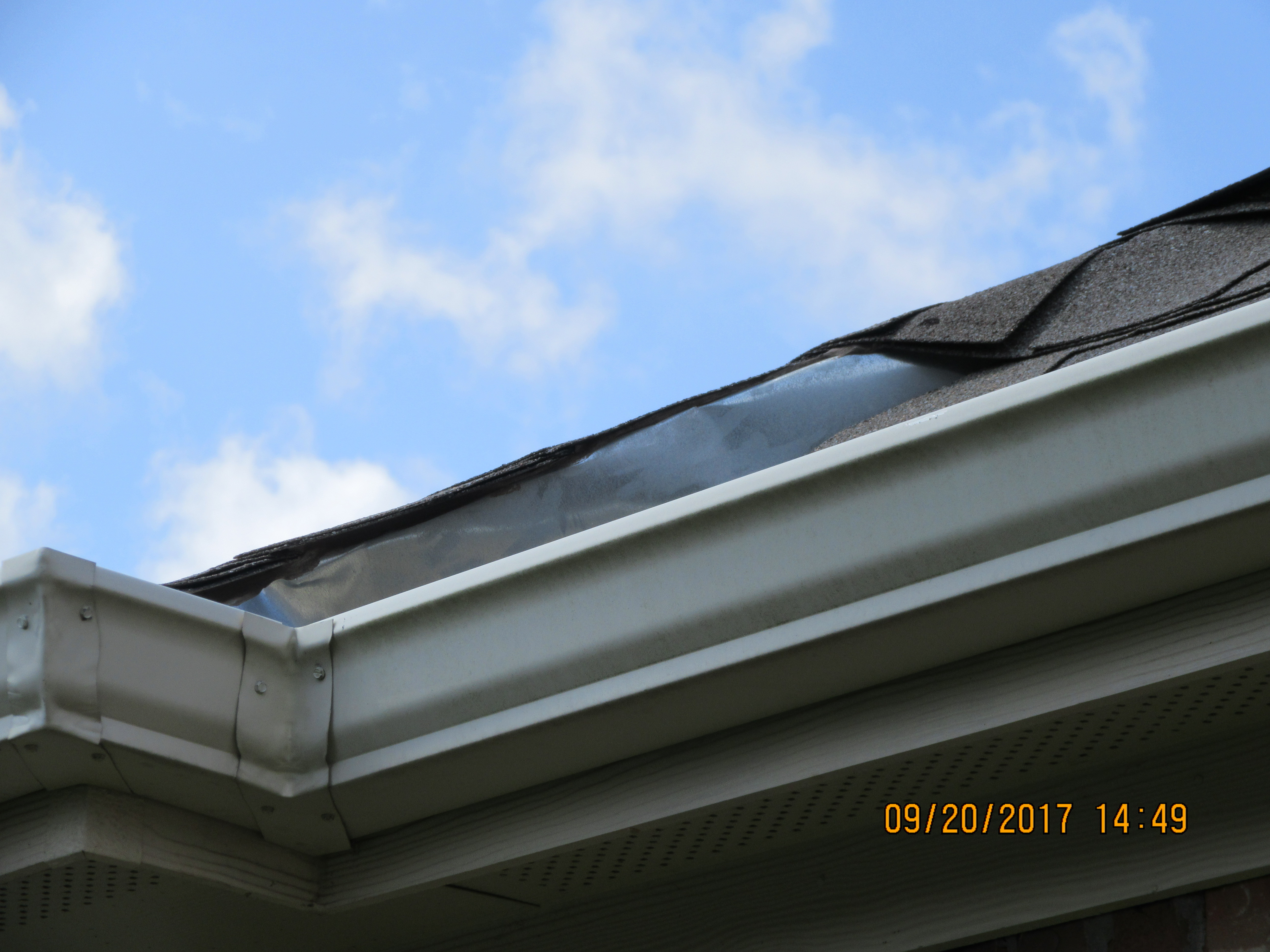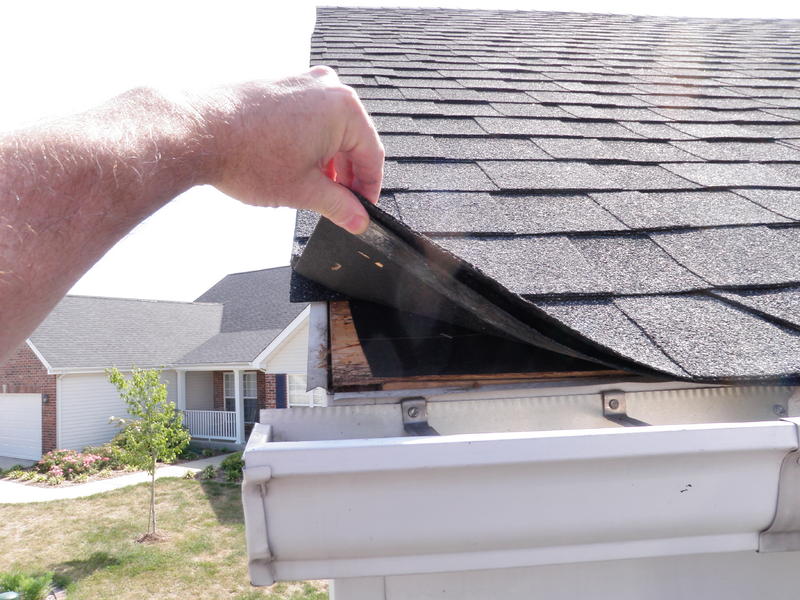“A Garage Inspection”
Roof trusses are designed to perform a specific function and should not be modified without consultation and design from a structural engineer. If hangers are going to be used they should be part of the original design and proper fasteners should be used to ensure proper fastening.
The roofing material is asphalt shingles. As seen in the picture there are signs of deterioration as the shingles are badly worn and debris from the shingles are collecting in the gutters. The shingles are at end of life and it is recommended to have a certified roofing contractor evaluate repairs or replacement of roofing material. Additionally, the drip edge material appears to be in good shape and functioning correctly.
Inspecting Step and Kick-Out Flashing at Roof-Wall Intersections:
Step and kick-out flashing is an important part of the building process. Where roof and wall sections adjoin step flashing is used to keep water from entering the walls. Kick-out flashing diverts water into rain gutters. Often, kick-out flashing is undersized with unsealed seams and fail. Roofers should coordinate the installation of the flashing with siding and house wrap installers to ensure installation is correct.
Hip roof style. Rafter all feel in good shape. Architecture 3 tab shingles newly installed with new flashing. Ridge vent on apex of roof. Gutter system is older. Some signs of water damege. may want to look into repair of replacing entire gutter system
https://www.nachi.org/gallery/chimneys/flashing/chimney-flashing.jpg The roof system along with the flashing has to be installed a certain way. It is okay for flashing to be laid on top of a roof shingle as long as the highest point of the flashing is under shingles or is worked directly into the brick to prevent water from getting in the house
While performing the inspection, this downspout was identified as terminating under the concrete. Without being able see its endpoint, it is unknown as to if thE gutter that it’s connected to will drain properly. Would recommended monitoring it as needed. If problems occur, contact a professional.
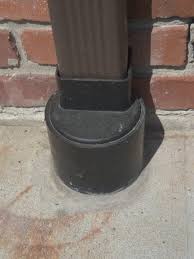
Gutters appear to have a downward slope, no standing water. There are two downspouts in this run. Gutters are securely fastened to the structure. I see no brackets missing or spikes backing out. I see no sign of leaks. I see no missing or damaged gutters. There are some leaves in the gutter with some particles from the shingles.
I read the article on ways to save energy in your home. One of the big things I learned was about air sealing the home. Caulking the windows and doors in a home to keep air from getting in to the home.
Architectural shingles. This roof is approximately 7 years old per the home owner. Minimal granular wear. Ridge ventilation due to its location above a vaulted ceiling with no attic. End covering shingle fasteners properly sealed. Observation was made from the northwest bedroom window.
Observation:
I observed the roof covering from the ground. This house is covered with 3tab fiberglass shingles. To my knowledge this development was built within the last three years so the roof seems to be quite new, and overall shingles appear to be in good shape.
Findings:
I found wind damage where there are missing and broken shingles in several areas of the roof and in some spots the underlayment is torn and missing as well. Ridge flashings and ridge caps are torn and many of them missing in several areas.
Because of the windy conditions I couldn’t walk on the roof safely and was not able to inspect the roof closely.
Recommendation:
I would recommend a roofing professional to be called in to evaluate the overall condition and the severity of the wind damage to the roof. Because of the type of findings the contractor should pay close attention and check how roof shingles were installed (fastened) and than suggest the best methods to fix all issues found.
In studying the chimney flashing diagram I learned that chimneys require four different types of flashing: apron flashing for the front, lowest end of the chimney, step flashing for the diagonals of the roof, head flashing for the back, or highest point of the chimney, and counter flashing, which is embedded into the chimney mortar and sealed, to keep moisture from getting behind the step flashing.
The image above shows an aluminum gutter system with asphalt build up and standing water inside. The gutters had an improper angle to sufficiently drain the water combined with an improper amount of downspouts. The gutters were fastened correctly with no sign of damage to the gutter material. There was no sign of obvious leaking throughout the system.
Attic condensation
Attic condensation can occur because of many different conditions like improper insulation installation, improper or none existing venting, leaking bathroom or kitchen vents in the attic, warn air penetrations through the ceiling i.e. around lighting fixtures and more. If any of the above conditions are not performing as intended we will find moisture and condensation present in the attic causing major issues like delamination of roof members.
This report consist of an inspection on the gutter and downspout system of this home.
The gutters installation system are sound and intact, properly installed however the gutter is quite full and partially blocked from debris coming off the roof, the roof is in very poor condition with some hail damage causing shedding materials to wash is to the gutters, repairs are recommended.
Downspouts seams to be installed in the correct manner to divert water from the home, however the downspouts are cracked and leaky from several areas, including poor connection at the joints/ elbows, connecters/ screws are missing causing downspout to work in-efficiently. where-as water can not fully diverted from the foundation off the house, this is a material deficiency and repairs are recommended.
I focused on photo gallery in the flashing section. I observed all photo’s to get a better illustration of different applications. For instance, headwall flashing should consist of house wrap, Siding, counter-flashing, flashing, covering, underlayment, and roof sheathing. The counter flashing over the to of the flashing and the flashing on top of the roof covering.
Hello there. Just wanted to drop in an introduce myself. I just completed the day course at INTERNACHI headquarters in Colorado. Thought I would start off with this course to continue the education I received there.
This is a roof line that didnt end up where it was supposed to. Flashing was installed under upper layer and under lower area.Not sure why shingles were not added to cover flashing unless securing shingles to flashing may have created possible water penetrations. No leaks/moisture or repairs were present at interior areas.
Moisture control is the only way to control mold. Health issues such as allergic reactions can occur. mold can grow on any surface or be air born. Wrapping pipes the condensate can prevent areas that might produce mold. Keeping humidity below 60% can reduce the possible growth of mold. Mold is everywhere and not always visible , exterior mold helps break down leaves and dead trees. Control moisture controls mold.
This section of roof when lifted does not have proper drip edge on the rake or the eave as well as insufficient underlayment does not cove to edges of roof. It is recommended to have this roof checked out by a professional roofer.
When deciding to walk a roof or not to inspect it, you should consider pitch, weather conditions, and roofing material as well as the condition of the roofing material. look for any visble rot or damage and decide whether or not the roof appears to be safe.

